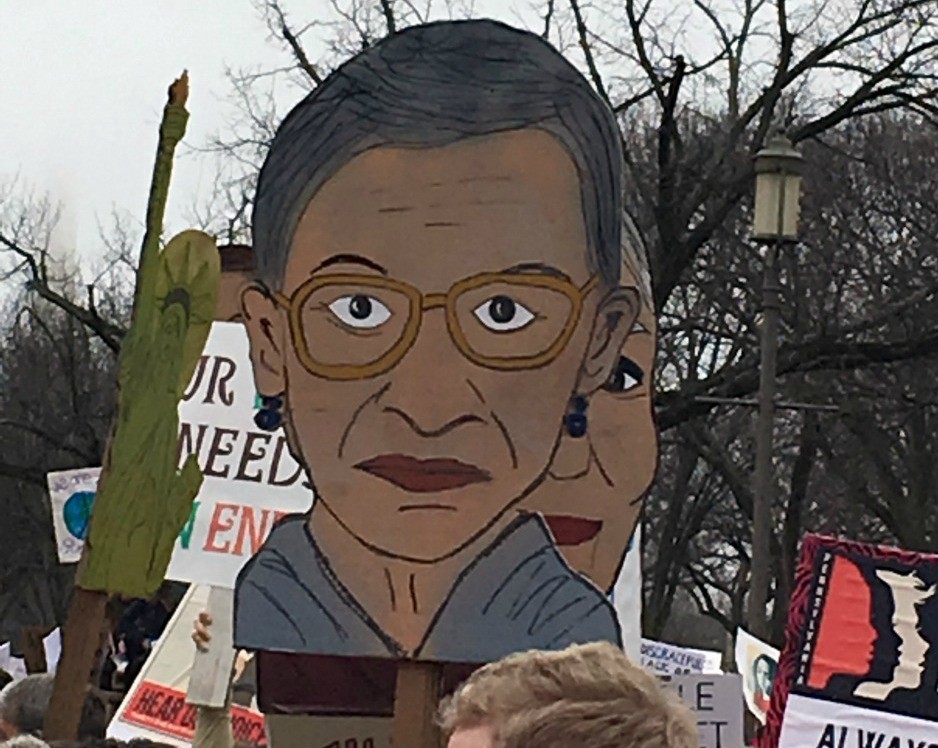
Organizers reported that 1 million people participated in the Women’s March on Washington on January 21. Estimated to be the largest one-day protest in U.S. history, it inspired 673 Sister Marches around the globe, attracting nearly 5 million participants worldwide. Surrounded by controversy on social media, and highly politicized debates over event turnout, the march took on a huge political scope.
What would it have been like to join a protest of such historic proportions? Just ask the University of Alberta’s Teddy Carter — she was there.
Teddy’s friend Christy suggested that they join the march immediately following the presidential election. Teddy was quick to jump on board. Partially inspired by another friend’s arrest during the Standing Rock demonstrations, she felt compelled to add her voice to the gathering swell of the Women’s March. By Black Friday, she and Christy had purchased plane tickets to Philadelphia, where they would eventually board a bus full of demonstrators heading for Washington.
For Teddy, who had participated in other marches and protests in Edmonton, the scale of the Women’s March on Washington was staggering. Even in Philadelphia, a 2.5 hour drive from Washington, the throng of demonstrators surpassed anything she had seen. “There were hundreds and hundreds of busses loading women on, and driving away with them to DC,” she remembers.

Everyone was excited; the atmosphere on the busses was energetic and upbeat. As the marchers disembarked and headed for a rally point, residents cheered from porches and blasted Shania Twain’s “Man! I Feel Like a Woman!” at full volume.
The mood took a marked swing as demonstrators neared the rally point, and the crowd became increasingly dense. “The energy of the people catches you as you hit the mass,” Teddy explains. She calls it ‘the crush’ — the demonstrators grew so numerous and tightly packed that it became difficult to breathe. At the same time, the intensity ramped up. “Electrifying is the best way that I can describe it.”
Teddy and Christy had arrived early, and made it into the heart of the gathering at the National Mall. Even there, none of the day’s speakers could be heard over the press of demonstrators. “You could see [them] on the jumbotron,” she recalls, “but you couldn’t hear anything at all, so people were just chanting the whole time.” While celebrities took the stage to address the crowd, the marchers were busy chanting, ‘Nope to the grope,’ ‘Leave my body alone,’ and, ‘This is what democracy looks like!’
Social media was rife with images of witty signs — some playful, some cutting — that demonstrators carried on the two-mile march to the White House. “I think the signs were the best part of the whole thing, because everyone had made their own sign,” Teddy recalls. Perhaps the most impressive, she thought, were a series of busts of historic women known for their roles in civil rights movements. “Everyone was really losing it over those signs.”

Afterwards, discarded signs filled every garbage bin in sight. Sanitation workers were still busy clearing the bins when Teddy and Christy left later that evening. Back on the busses, a sense of comradery — even family — had overcome the marchers, along with deep physical and emotional fatigue.
Teddy reflects on the whole experience with some uncertainty, though. Her greatest motivation for participating in the march had been the increasingly jeopardized safety and security of racialized populations. “I don’t know if that was really addressed or effectively pointed at in the protest,” she confesses. “A lot of the commentary from the feminist community after the march is that it excluded things like gay and trans rights, and it excluded people of colour… it’s problematic in that sense,” she says. The demographics, she explains, simply weren’t represented.
While it was a powerful experience for Teddy, she worries that the march had a limited impact on the political discourse of the recent election. “It was an honest effort,” she says, “I just don’t know if it was a very meaningful effort.”
The Women’s March on Washington has since spawned a new campaign, 10 Actions/100 Days, aimed at sustaining the momentum of the march. Its ability to build from historic levels of civic participation — and redress the widespread marginalization at which it takes aim — remains to be seen.

Teddy CarterTeddy Carter is the Selection and Review Coordinator in the Office of the Provost and Vice-President (Academic).